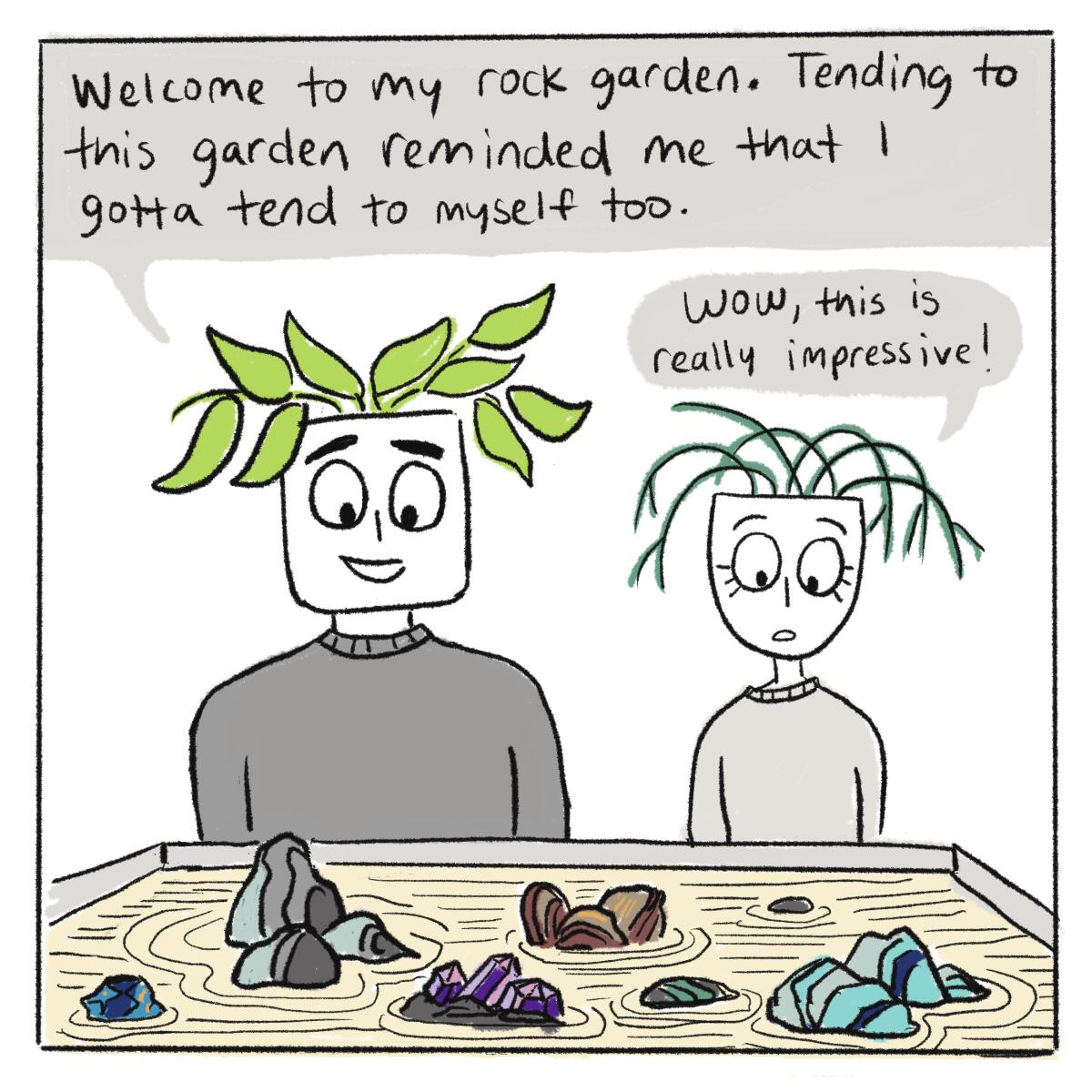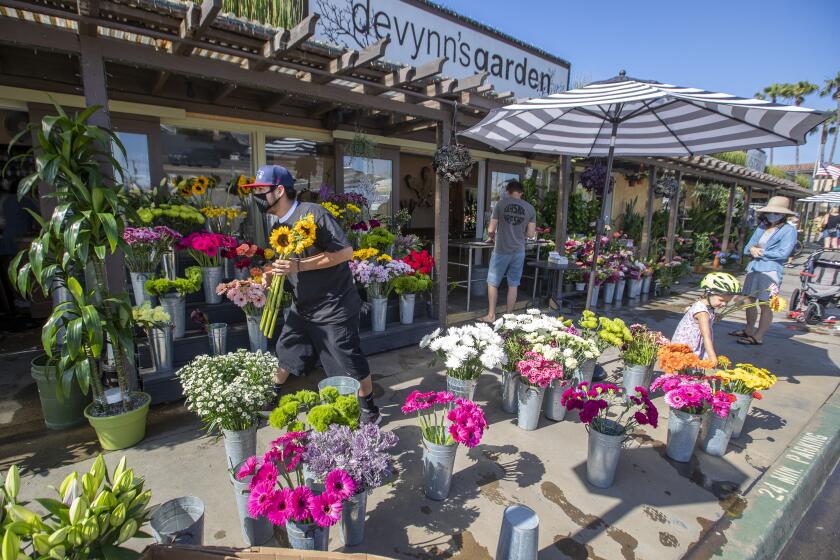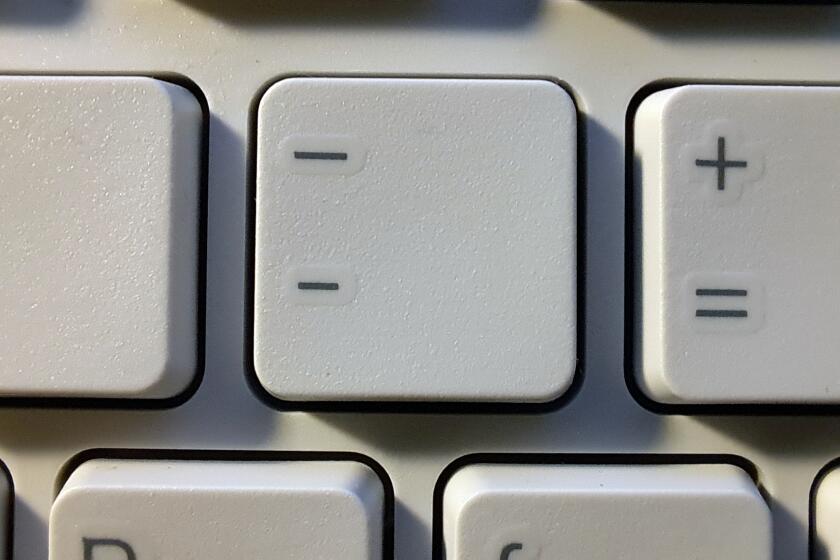Commentary: Patients with anxiety are faring fairly well but they may be avoiding underlying causes

- Share via
As a practicing psychologist and a researcher focusing on mental health, I consider myself a front line responder in this fight against COVID-19.
When the pandemic was announced, I was prepared for a war. Imagine my surprise when the battle never began.
Indeed, what has surprised me is how well my clients have fared, generally speaking. I specialize in working with clients with anxiety-related problems, yet in projecting for a surge in mental health problems and metaphorically rolling up my sleeves, I had critically failed to calculate the effect of one important variable in anxiety — avoidance.
Hiding from what’s difficult, which, in the case of many of my clients, are in-person social interactions (clients with social anxiety), school attendance (clients with social anxiety and generalized anxiety disorder), and exposure to large numbers of people and situations involving contaminants (clients with agoraphobia or obsessive compulsive disorder), reduces distress in the short-term.
So for this socially distanced moment, my clients seem quite comfortable, chatting with me through telehealth from within the confines of their bedrooms while wearing fuzzy slippers.
Because they aren’t actually confronting what scares them.
Email [email protected] to sign up for the newsletter featuring the latest news involving Newport Beach, Huntington Beach, Costa Mesa, Laguna Beach, Fountain Valley and other parts of Orange County.
But I can see the telltale sign of avoidance’s troops building their forces. They’re there when my teenage clients tell me they no longer feel comfortable turning the camera on during their Zoom home-schooling sessions (because they don’t like the feeling of people looking at them) or when they say they have stopped leaving the house for walks because they don’t like being exposed.
What anxiety specialists know about avoidance is that while it may reduce distress in the moment it increases anxiety of the feared stimulus in the future and it strengthens the person’s conviction that the feared stimulus should have been avoided in the first place.
Evidence of the power avoidance has in making anxiety worse is apparent when we look at how difficult it can be for people to return to challenging activities following even small breaks in routine, such as the difficulty anxious children have returning to school after the summer or winter recess.
Conversely, anxiety gets a kick in the butt when we minimize our avoidance of feared activities; this fact is illustrated by how public speaking becomes markedly less stressful when people do it regularly as part of their work, largely because they habituate to the anxiety associated with it.
How do these principles translate to the era of COVID-19 social distancing? Scores of people are huddled inside, doing what’s in the interest of the public good, but unfortunately, for some, it might be at the expense of their mental health.
When we start to open up our state, removing social distancing, I am bracing myself for the distress floodgates to open. For this is when the big reveal will occur, and we will witness the separation of anxiety-related avoidance from government-prescribed social distancing.
The majority of people were distancing solely for safety, those who experienced the distancing as painful and distressing, will emerge desperate for contact with the outside world and grateful for freedom.
The people who hang back and can’t or won’t re-engage, those who experience far more distress re-entering public life than they did leaving it — these are the people among us who may be suffering from anxiety-related mental health problems.
What can you do if you yourself are or if you know one of these people? The solution is to push back against the anxiety-related avoidance by doing as much as possible within the safety of government-prescribed social distancing. Don’t allow the avoidance to settle in, even though it’s more comfortable to do so.
Challenge your anxiety in any way you can — make more phone calls, turn your camera on during zoom meetings, take walks when your anxiety tells you to stay inside and resist the urge to wipe down your groceries for the third time. Start building your troops now so you are prepared for tomorrow’s fight.
The writer is an associate professor of psychological science at UC Irvine.
All the latest on Orange County from Orange County.
Get our free TimesOC newsletter.
You may occasionally receive promotional content from the Daily Pilot.




